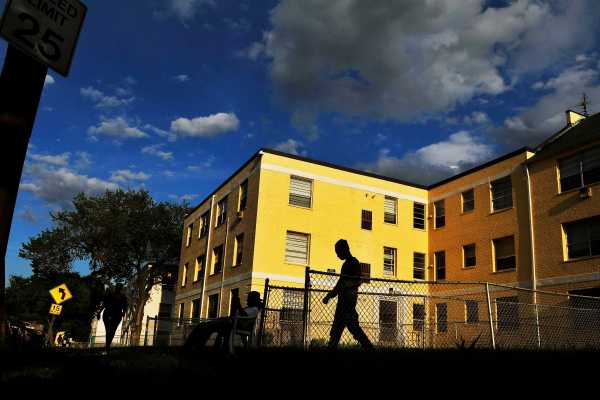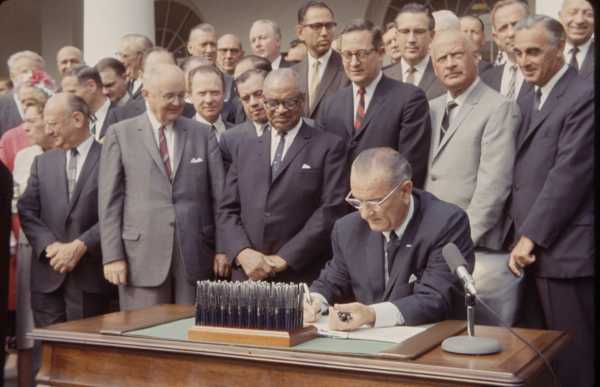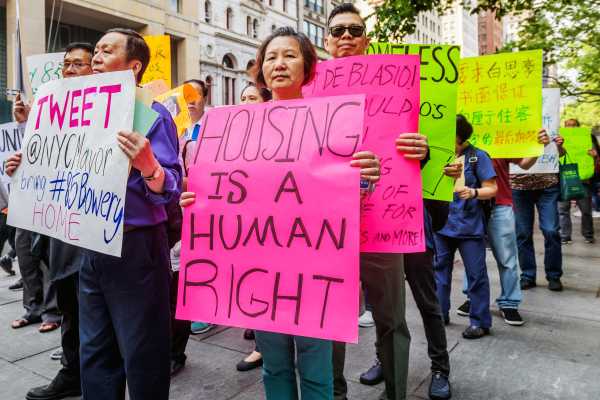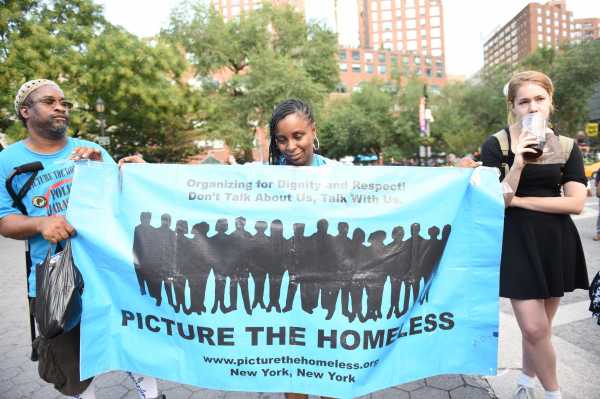
Vouchers can help the poor find homes. But landlords often won’t accept them.
Why discrimination against voucher holders is a big problem.
By
Stephanie Wykstra
Dec 10, 2019, 8:30am EST
Share this story
-
Share this on Facebook
-
Share this on Twitter
-
Share
All sharing options
Share
All sharing options for:
Vouchers can help the poor find homes. But landlords often won’t accept them.
-
Reddit
-
Pocket
-
Flipboard
-
Email
This story is part of a group of stories called

Finding the best ways to do good. Made possible by The Rockefeller Foundation.
When Tisha Guthrie learned in 2009 that she’d received a housing voucher that would help with her rent in Baltimore, she was excited. She’d joined the waiting list five years prior, when she became unable to work full-time due to serious health issues (she received both kidney and pancreas transplants, and is also legally blind).
Yet Guthrie, now 45 years old, found that none of the apartments where she applied would accept her voucher. She inquired at nearly 20 buildings that advertised apartments in her price range. But whenever she mentioned her voucher, landlords said they didn’t take them, or that they didn’t have any apartments available.
“You start to feel defeated,” Guthrie told me. “You feel you’re being stigmatized based solely on having this form of rental payment.” She searched for a year before she finally found a landlord who would take her voucher.
Guthrie’s experience is all too common. Federally funded vouchers like hers (called housing choice vouchers) provided more than 2.2 million households and 5 million people with rental assistance in 2018. The vouchers help make housing affordable for low-income individuals: Voucher holders pay 30 percent of their income toward rent and utilities, while the government pays the remainder (up to the maximum allowable amount).
Yet in major cities from Los Angeles to New York City to Philadelphia to Chicago — and in many smaller ones, too — voucher holders often encounter landlords who refuse to take them or find other ways to avoid renting to them, including falsely claiming that they have no available apartments.
In response, states and cities have passed legislation known as “source-of-income laws,” which ban landlords from discriminating against people just because they’re using a voucher. Last year, Guthrie joined advocacy groups pushing for a source-of-income law in Baltimore, testifying about her experience and writing an op-ed. In 2019, the city passed such a law, albeit with a limitation that advocates opposed.
At the same time, it’s become clear that these laws are not enough. In some places, discrimination against voucher holders remains common, even with source-of-income laws on the books. Advocates argue that greater enforcement is needed, along with further adjustments to put voucher amounts more in line with fair market rents. And in cities with tight rental markets, they are pushing for increased construction of affordable housing.
A strong body of research shows that housing vouchers help prevent homelessness, as well as increase long-term health and economic outcomes of children in low-income families. Vouchers are of huge importance to millions of people, but discrimination against people who use them threatens to thwart the progress that’s been made in housing the most vulnerable among us.
Housing vouchers, explained
Federally supported vouchers were introduced with the Section 8 program in 1974. By the late ‘90s, housing vouchers comprised the largest low-income housing assistance program.
In 2018, 1.2 million households used Section 8 project-based vouchers (used in specific housing developments), and 2.2 million households used housing choice vouchers (“portable” vouchers that can be used for renting apartments in the private market). Other types of rental assistance support specific demographic groups: For example, the HUD-VASH program was created in the early 1990s to subsidize housing for homeless veterans. Many cities and states also fund their own subsidized housing programs.
To determine eligibility for federally funded vouchers, the Department of Housing and Urban Development (HUD) sets income limits, which are based on estimates of median incomes and fair market rents in the area. For housing choice vouchers, 75 percent of recipients must be “extremely low-income,” which means their earnings do not exceed 30 percent of the area’s median income or the federal poverty line, whichever is higher. Unlike other federal poverty-alleviation efforts — like the Supplemental Nutrition Assistance Program (SNAP, known informally as food stamps) — housing vouchers are not considered an entitlement, and only a quarter of eligible households end up receiving federal rental assistance.

When someone receives a housing choice voucher, they have limited time (usually between 60 and 120 days, though extensions are sometimes possible) to find an apartment, after which they pay 30 percent of their income toward the rent (or a maximum amount of $50 per month, if they do not have any income). Local public-housing agencies administer the voucher programs, inspect apartments to make sure they meet minimum standards, and pay rent directly to landlords.
Multiple randomized trials have shown that housing voucher programs really do benefit the people who use them. For example, a HUD-funded study dubbed “Family Options,” by researchers at Abt Associates in partnership with Vanderbilt University, found that vouchers reduced the rate of homelessness or “doubling up” with other households by 18 percent, compared with a rate of 35 percent for the control group.
A separate HUD-funded study, called the “Moving to Opportunity” project, found significant benefits for families that relocated to lower-poverty neighborhoods with the help of vouchers, including better health, higher incomes, and increased rates of college attendance for children whose families moved before they were 13.
Despite their effectiveness at preventing homelessness and increasing housing stability, voucher programs are falling short of their promise. Though originally conceived as a way to help low-income households (disproportionately comprised of people of color) access higher-opportunity neighborhoods, that has proven to be the exception rather than the rule. Families that use housing choice vouchers are often concentrated in poor neighborhoods. For example, a recent study from the Center on Budget and Policy Priorities found that just 14 percent of metro-area families with children living in low-poverty neighborhoods used housing choice vouchers.
Another problem is that many voucher holders struggle to find a landlord willing to accept them. A HUD study published in 2001, for example, found that roughly 70 percent of voucher holders had succeeded in renting an apartment, though the average was closer to 50 percent in cities like New York and Los Angeles. More recent studies have found comparably low success rates of 50 to 60 percent.
Though it’s likely not the sole cause, there’s strong evidence indicating that landlord discrimination contributes to both problems.
Landlords discriminate against people who use vouchers
Firsthand accounts from many voucher holders illustrate the hurdles they face when searching for an apartment.
In New York City, I spoke with half a dozen voucher holders who have either been unable to find an apartment after an extensive search, or who did so only after many months (in some cases, years) of looking.
Forty-five-year-old Sofia (who asked to be identified by her first name only) lives with two of her children in a shelter. Sofia, who is unable to work due to recent debilitating health problems and surgeries, received a city-funded voucher in early June. But after inquiring about dozens of apartments she found online, she said brokers and landlords repeatedly told her they didn’t have any apartments available, or that they’d get back to her later.
Sofia never heard from them again.
After five years of unstable housing, during which she and her children stayed with family or in shelters, Sofia said she was hopeful the voucher would help them move into their own place. But after months of searching, she told me, “It’s been really, really hard and so stressful, calling all these brokers and landlords, and it was a big load on me, on top of the load that I’m already dragging.” Hers isn’t the only such story I heard.

Systematic research corroborates these firsthand accounts. In 2018, the Urban Institute conducted tests by calling thousands of landlords in five cities who were listing voucher-affordable apartments. In three of the cities — Los Angeles, Philadelphia, and Fort Worth, Texas — over two-thirds of landlords said they would refuse to accept vouchers. (In New York City, though it’s clear discrimination is present, there’s little recent data available on the frequency of landlord refusal or the success rates of finding housing using vouchers.)
In response to the problem, 13 states (plus Washington, DC) and more than 50 cities and counties throughout the US have passed source-of-income laws requiring landlords to treat voucher holders the same as they would other applicants. Landlords are also prohibited from turning down voucher holders based on their source of payment.
However, there are still many areas that haven’t passed such laws. The Poverty and Race Research Action Council estimates that as of November 2019, only about half of voucher holders are covered by source-of-income laws. Meanwhile, both Texas and Indiana have passed legislation to prevent jurisdictions in their states from creating their own source-of-income laws. At the federal level, several bills banning voucher discrimination have been introduced, but none have passed.
There is evidence that source-of-income laws help voucher holders find apartments: A study comparing rates before and after a source-of-income law went into effect found significant increases in voucher use, ranging between 4 and 11 percentage points.
Yet advocates argue that more is needed. Research suggests source-of-income laws have only a modest impact on moving households to low-poverty areas. And in some areas, particularly low-poverty neighborhoods, landlords often continue to refuse vouchers despite the presence of such laws.
For example, in Philadelphia, the Urban Institute’s study found that 67 percent of landlords with eligible apartments refused to rent to voucher holders, regardless of legal protections in place. The rate was even higher in low-poverty neighborhoods. There’s evidence that voucher discrimination is exacerbated by racial discrimination, too: In a recent study from the Federal Reserve Bank of Boston, 80 percent of black voucher holders reported that landlords in low-poverty areas would not accept vouchers, compared with 57 percent of voucher holders from other racial groups.
How to fight voucher discrimination
One way to improve the situation is straightforward enough: better enforcement of source-of-income laws.
Some cities are starting to take a more active role in this. For example, the NYC Department of Social Services has brought several lawsuits against large landlords for voucher discrimination.

In 2018, NYC’s Commission for Human Rights formed a new unit to help fight income discrimination, and has since received over 800 complaints from voucher holders. The unit files formal complaints against landlords; its director, Stephanie Rudolph, said another top priority is intervening quickly, enabling voucher holders to move into buildings that had initially ignored them or turned them away. (Advocates in New York City who have praised the work of CCHR are pushing the city to provide greater funding for the unit, which currently has only five members.)
Another key part of improving voucher programs is assisting voucher holders in their search and documenting discrimination, said Annie Carforo, campaign manager at Neighbors Together, a nonprofit organization that assists low-income New Yorkers. Carforo has talked to hundreds of people — many of them living in city shelters — who struggle to find apartments that will accept their vouchers and who have been given little, if any, assistance in their search. In some cases, people are unaware of the laws prohibiting voucher discrimination. “It’s heartbreaking to meet people who have been looking for housing for two years [using vouchers], and who never knew it was illegal for landlords to treat them this way,” Carforo said.
Investing in a greater level of assistance for voucher holders is also a major component of Creating Moves to Opportunity, an initiative in Seattle and surrounding suburbs that helps families with housing choice vouchers relocate to high-opportunity neighborhoods. As Dylan Matthews recently reported for Vox, a randomized study of the program found big results: 54 percent of families in the treatment group that received counseling moved to a high-opportunity area, compared with 14 percent of families in the control group (which had received vouchers only).
In some areas, improving the voucher system could also involve improving the voucher-acceptance process for landlords. Landlords in some cities have pushed back on source-of-income laws, and a recent qualitative study by researchers at Johns Hopkins University showed that some landlords are worried about losing money if they accept vouchers, due to inspections and other kinds of administrative delays. The researchers suggest that making the process more efficient could help address landlord concerns.
Another approach may be increasing landlord incentives, such as bonuses and tax breaks, which a few states and cities already offer. In addition, the Urban Institute recommends greater investment in actively recruiting landlords to participate in voucher programs, particularly in low-poverty neighborhoods.
The vouchers themselves could use improvements, too. In some cases, the lack of housing choice may be caused in part by voucher amounts that are not properly calibrated to local rents. Voucher amounts have typically been set by median rents in a large area (such as a metro area), but in recent years, there’s been a shift toward calculating median rents within smaller geographic areas (such as zip codes).
Following a lawsuit, Dallas was the first to try this approach, which led to a greater use of vouchers in low-poverty neighborhoods. After studying the approach in five other pilot areas, HUD shifted to the new way of calculating median rent (called “small area fair market rent”) for 24 metro areas, and other housing agencies can decide to make the change voluntarily. (Though promising, it’s still too early to tell how much this policy shift will help increase mobility on a larger scale.)
No one solution to the problem
But one of the challenges in addressing voucher discrimination — and, more broadly, our housing crisis — is that there’s no one-size-fits-all solution to the problem. As Andrew Aurand, vice president for research at the National Low Income Housing Coalition, told me, “Different housing markets have different needs.”
In some places, he said, it’s clear there needs to be an increase in affordable housing alongside improvements to the voucher program. Many advocates in New York City, including those working to address rising homelessness, agree.

“We need to be actually thinking about expanding the supply of affordable apartments, instead of just going after an extremely scarce resource with vouchers,” said Jacquelyn Simone, policy analyst at the Coalition for the Homeless in New York City. The Coalition is pushing the city to dedicate 10 percent of new affordable apartments (out of the 300,000 planned by 2026) to currently homeless people, many of whom have vouchers they haven’t been able to use.
But Aurand notes that in other parts of the country, the shortage in affordable housing is less severe — the issue is that extremely low-income households cannot afford to pay even relatively low rents. In those cases, Aurand said, it would be effective to increase voucher funding. Given that only a quarter of eligible low-income households receive vouchers now, there’s a lot of room for expansion. (Several presidential candidates have announced housing proposals that would fully fund federal vouchers for all eligible households, as would a recently introduced Senate bill.)
Improving the voucher system, increasing access to affordable housing, and giving households more choice in where they live would help fulfill the original promise of housing vouchers. Without stable housing, and especially when experiencing homelessness (as half a million people do on any given day), it is extremely difficult for people to stay afloat.
After years of moving from place to place and staying in shelters, “I’m walking through mud,” Sofia told me. She is still searching, hoping her family will find a home using their voucher. That we make it so hard for people like Sofia is an indictment of a system ostensibly meant to help her.
Sign up for the Future Perfect newsletter. Twice a week, you’ll get a roundup of ideas and solutions for tackling our biggest challenges: improving public health, decreasing human and animal suffering, easing catastrophic risks, and — to put it simply — getting better at doing good.
Sourse: vox.com






